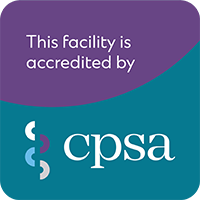Image generated using deepai.org
Persistent pain is complex – and that’s the easy place to start! I’ll get to the operational definition of pain shortly. But I was reminded this week that some clinicians are not thinking of pain mechanisms when treating patients. I was tasked with reviewing a person’s progress, months after they decided to pursue further conservative rehabilitation following an initial evaluation of their persistent pain following a motor vehicle collision approximately 18 months previously. Initial examination demonstrated high pain (numerical pain rating scale = 8/10) and disability (Neck Disability Index = 28/50) levels, with higher levels of post-traumatic stress, DASS-21 (stress, anxiety and depression subscales all above ‘moderate’). Impaired pain cognitions were evident (pain catastrophizing scale = 30/50) with low self-efficacy reported when tasked with performing activities that might result in pain. Significant sleep disturbance was also reported.
Physical examination was challenging due to the presence of widespread mechanical hyperalgesia and heightened responses to neural tissue provocation in the upper and lower quadrants. Aberrant tests of central pain processing were evident, particularly with impairment of descending pain modulation. Temporal summation testing was also facilitated. Essentially as XTC postulated in 1982, their senses were working overtime. Previous MRI imaging was essentially unremarkable for signs of structural pathology.
Summary of Person’s Lived Pain Experience
Our initial clinical impression was that the person’s lived pain experience (PWLE) was influenced primarily by top-down central pain processing mechanisms, with an inability to localize a source of nociception responsible for the reported symptoms. Referral to a psychologist was made, referral for sleep management was made, a suggestion for neuro-modulatory pharmacological management was made (by our MD) and further goal-oriented exercise therapy that avoided exacerbating symptoms with particular attention to focus on CBT strategies to address the impaired cognitive beliefs. The person was happy with this approach, agreed to pursue this and took a note back to their rehabilitation provider with the treatment plan, which we also sent separately.
Follow-Up
Three months pass and we routinely follow up people to determine the outcome of the treatment plan. Not good! The PWLE reported that the health care provider did not know what CBT was, and was focused on treating the tight muscles – with dry needling it must be said – so much for the facilitated temporal summation. Exercises were directed at strengthening using a 3 sets of 10 repetitions paradigm (again – so much for the facilitated temporal summation) without goals provided. A flare-up plan had not been provided, nor any plan to pursue exercise around pharmacological intake. Not surprisingly, the PWLE had worsened, with follow-up pain and disability levels worse. Thankfully, psychology had recently been instituted and was helpful for the pain flares resulting from rehabilitation. Funding for sleep management had been declined. Medication had been incorporated and was helpful in assisting sleep management, without note of improvement in pain.
Understanding Pain Mechanisms
Operationally, pain is a subjective experience consisting of multiple underlying mechanisms widely distributed within the CNS. Although nociception may have initiated the one predominant mechanism evident – central sensitization – clinical examination had failed to localize a distinct source of nociception that might be maintaining the person’s pain from a bottom-up tissue based perspective. However, as Kaplan and colleagues recently and eloquently explained in their review of nociplastic pain1 – it is possible for some people to have persistent pain as a result of aberrant central pain processing – more a top-down maintenance. Thus, it makes sense in these situations to address the aberrant central pain processing. Treating peripheral mechanisms does not make much sense. Especially if this results in a further wind-up of their pain condition!
Now, the evidence of modulation of top-down maintenance of central sensitization (CS) is lacking. This is likely partly associated with the lack of a criterion (gold) standard for CS. And also, we don’t know what underlying mechanisms are driving these heterogeneous clinical features. Thus, it is challenging to match treatments to underlying mechanisms and know with any degree of certainty what is being treated, and thus what treatment might best help a person at the individual level. I will cover some options in an upcoming blog – i.e. treatments that have demonstrated success in PWLE AND also demonstrated changes in central pain processing .
References:
- Kaplan CM, Kelleher E, Irani A, Schrepf A, Clauw DJ, Harte SE. Deciphering nociplastic pain: clinical features, risk factors and potential mechanisms. Nat Rev Neurol 2024;20(6):347-363. DOI: 10.1038/s41582-024-00966-8.





